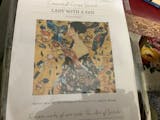Pieter Claesz (1)
Pieter Claesz, a master of Dutch still life painting in the 17th century, was a true virtuoso when it came to capturing the quiet beauty of everyday objects. Born around 1597 in the Netherlands, Claesz was part of the Golden Age of Dutch art, a period when still life painting flourished as an expression of wealth, transience, and the beauty of the mundane. He was particularly known for his stunningly realistic depictions of food, glassware, and other objects that, in lesser hands, could easily slip into the mundane. But with Claesz, they became a celebration of detail and texture.
What sets Claesz apart is his ability to take ordinary objects and turn them into works of art that feel rich with meaning. His paintings often feature a carefully arranged array of foodstuffs—hams, cheeses, oysters, and fruit—set alongside gleaming goblets, silver dishes, and decanters filled with wine. These works aren’t just a display of wealth (though the items depicted would have been a status symbol at the time), but they also explore the fleeting nature of life, as many still life paintings did during the Dutch Golden Age. In fact, the genre often incorporated subtle reminders of mortality, like a skull or a half-empty glass, alluding to the transience of life and material wealth.
One of his signature elements was his attention to detail. Take, for example, his depictions of glassware—he could make a goblet look so real that you could almost feel the cold glass against your fingers. The reflections of light on the surface of the glass, the way the wine swirled inside it—Claesz made sure that no object, however small or simple, was rendered without a level of care that elevated it to art.







